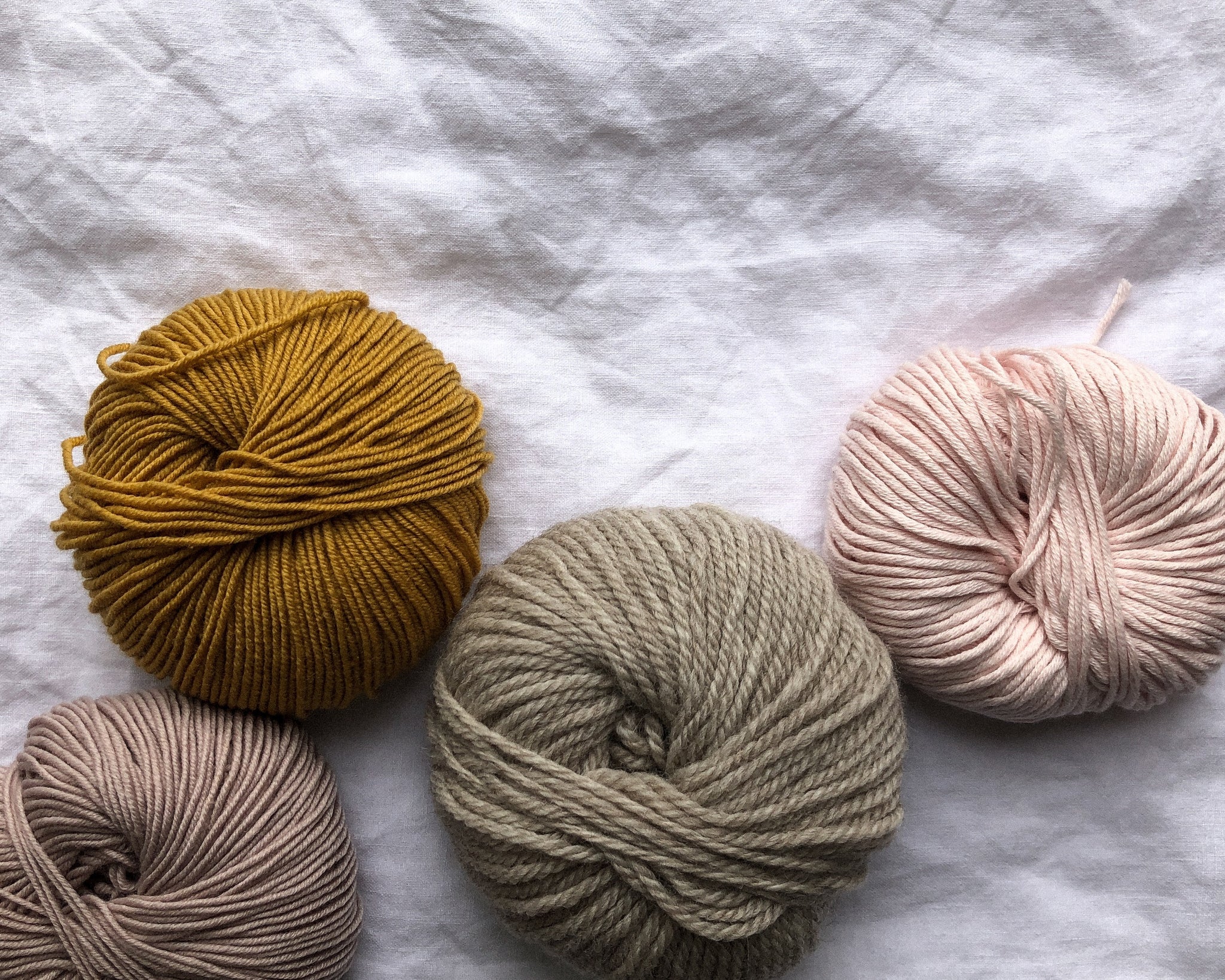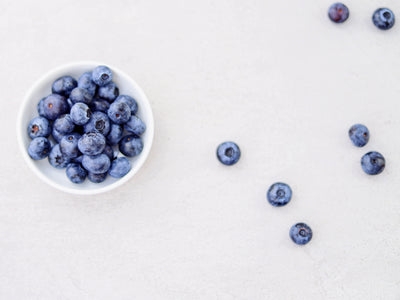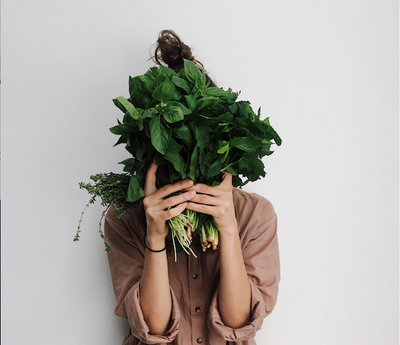Sustainable fashion: In search of conscious clothes

Each year, we create 92 million tonnes of textile waste. Each second, the equivalent of a rubbish truck of clothes ends up on a landfill site.[1]
Thanks to its careless use of water (93 billion cubic metres annually), and the environmental toll it takes, fashion is thought to be the second most polluting industry in the world.[2]
From dyes to pesticides, making modern clothes involves a dangerous cocktail of chemicals. These chemicals find their way into our water systems, natural environments, food streams and bodies, causing illness, allergies and aggravating sensitivities.
But hope is on the horizon. Whether it’s championing organic materials or embracing sustainable production processes, fashion brands are making strides towards a better, brighter future. And from switching detergent to choosing natural fibres, there’s plenty of ways you can build a more conscious wardrobe...
Make do and mend
According to resources charity Wrap, extending the lifespan of a garment by just nine months could drastically reduce its impact on the environment.
But what about when your best dress has a rip in the seam, your favourite cashmere socks have been mauled by moths and your jacket’s gone threadbare at the elbows? Time to get creative and bring out the repair kit, say a growing tribe of people passionate about restoring beloved garments to new glory. As author, artist and professional textile repairer Molly Martin writes:
“To repair something is a defiant act, flying in the face of consumerist values and products. Slowing down and finding value and meaning in the smaller things in life can contribute to a more thoughtful approach to our clothes and the world we live in.”
Care and repair, says Molly, is an invaluable mantra “for your wardrobe, your mental health, your wallet and the planet.”
Molly’s newly-published book, The Art of Repair – Mindful Mending: How to Stitch New Life into Old Things explores the origins of repair and what it means today – providing the perfect antidote to our increasingly disposable lifestyle. It includes time-honoured repair techniques, guiding you through piecing and patching, plus personal repair stories and helpful tips on how to master simple stitches and darning skills.

Choose eco-friendly fabrics
Crease-free, waterproof, stain-resistant, sweat-wicking. Modern demands on clothing mean our textiles are awash with heavy chemicals, dyes and synthetic treatments.
So-called ‘easy care’ fabrics are coated with the same stain-resistant finishes as non-stick pans, made up of perfluorinated compounds (PFCs), which have been linked with testicular and kidney cancer.[3] Meanwhile, fabrics treated with antimicrobials such as triclosan could contribute to endocrine disruption[4] in humans.
Materials like nylon and polyester are made using fossil fuels, and can release microplastics into the environment when washed and worn.
Even natural fibres are often grown using genetically modified seeds and pesticides containing carcinogens.
But there are several sustainable, non-toxic fabrics out there, which won’t harm your health or pollute the planet, such as:
Global Organic Textile Standard (GOTS) certified organic cotton
GOTS-certified organic cotton considers both the social and environmental impact – making it the gold standard for a sustainable textile. It’s grown GMO-free, never treated with artificial pesticides, fertilizers or fungicides, and is free from chlorine, formaldehyde, heavy metals and many allergens. GOTS-certified organic cotton also uses 71% less water and 62% less energy than conventionally produced cotton.[5] Plus, it feels feather-soft to the touch.
Conventional cotton, by comparison, signifies less than 3% of global agriculture, but accounts for almost 25% of the most toxic insecticides and more than 10% of the most harmful pesticides. According to the Pesticide Action Network, “cotton pesticides are often broad-spectrum organophosphates – pesticides originally developed as toxic nerve agents during World War II.”[6]
Wool
We’ve been wearing wool since at least 10,000 BC. But while wool is one of the oldest materials on the planet, it’s also one of the most sustainable. Recyclable, biodegradable and renewable, wool can be produced organically. It’s also one of the cosiest, most durable fabrics going, with naturally flame-resistant, water-repellent properties. Wool garments also tend to be washed less often and at lower temperatures, helping protect the environment. And, being a protein-based, natural material, wool won’t contribute to the growing problem of microplastic pollution.
Tencel
Tencel is a natural, sustainable brand of Viscose – a fabric which comes from trees. Made from cellulose extracted from renewable eucalyptus, Tencel is manufactured in a closed-loop process, where all by-products are recycled. Tencel’s production flow also uses far fewer and less harmful chemicals, creating an environmentally-friendly product.
Shop second-hand – and donate!
Draws full of old maternity clothes? Sparkly disco top that hasn’t seen a dancefloor in decades? Give your unloved outfits a second life and help make the fashion industry more circular by donating them to charity or listing them on a slow fashion app.
If the rails in your local charity shop are already brimming, consider donating your wares to UK charity Smart Works. Smart Works provides high-quality interview clothes, styling advice and interview training to women who are in need and out of work, giving them the confidence and tools to begin a new chapter.
Shopping second-hand needn’t mean hours of trawling, either – with clever new tech making the experience more accessible. Try resale sites like Debop, Vinted and Loopster, or – for designer pieces, Vestiarie Collective.
Give your washing machine a break
Spurred on by sparkling detergent ads and the notion of brilliant whites, we’ve become increasingly obsessed with an unrealistic idea of how often our clothes need washing.
Washing uses up a lot of water. It can also wear delicate fabrics out, making clothes look old before their time. Plus, every time you wash garments made from synthetic materials like polyester or nylon, microplastics and chemicals are released into the water, often accumulating in the environment through the water supply and causing harm to aquatic wildlife.
Only wash your clothes when they’re properly dirty, and spot clean or hand wash to help cut down on water consumption.

Recycle
If you’ve darned, stitched, and patched – and your garment has seen better days (and is too far gone to give to charity), rather than binning it, pop it in a recycling bank.
loveyourclothes.org.uk has lots of info on what to do with unwanted old clothes, including a handy recycling locator to find your nearest textile recycling bank.
Not only does recycling your clothes save on raw materials, energy, chemicals, and water, it also means less landfill.

Switch to a natural detergent
The familiar, floral, ‘clean’ scent that you get from freshly-laundered clothes? Unfortunately, that’s usually down to the toxic cocktail of chemicals found in most standard detergents and fabric softeners – and they’re bad news for your health and the environment.
From phosphates to Nonylphenol Ethoxylates (NPEs), many of these chemicals are linked with allergies, migraines, and hormone disruption – as well as polluting waterways and the air around us with the volatile organic compounds they emit.
To help alleviate this issue, choose a more natural detergent. Bio-D detergent is proudly toxin-free and approved by Allergy UK, while Greenscents Organic Laundry Liquid cares for even the most sensitive skin.
Do your research
For free info and advice on everything from a fashion brand’s stance on animal welfare to labour conditions and vegan materials, have a browse of the Good On You app.
Some of our favourite conscious clothing brands…
Environmentally-friendly:
Ingeniously recycled materials:
Socially responsible:
Consciously created goods under one roof:
References
[1] https://www.theguardian.com/environment/2017/jul/11/uk-households-binned-300000-tonnes-of-clothing-in-2016
[2] https://news.un.org/en/story/2019/03/1035161
[3] http://www.c8sciencepanel.org/prob_link.html
[4] https://greensciencepolicy.org/our-work/class-concept/#antimicrobials
[5] http://farmhub.textileexchange.org/upload/library/Farm%20reports/LCA_of_Organic_Cotton%20Fiber-Summary_of%20Findings.pdf











































